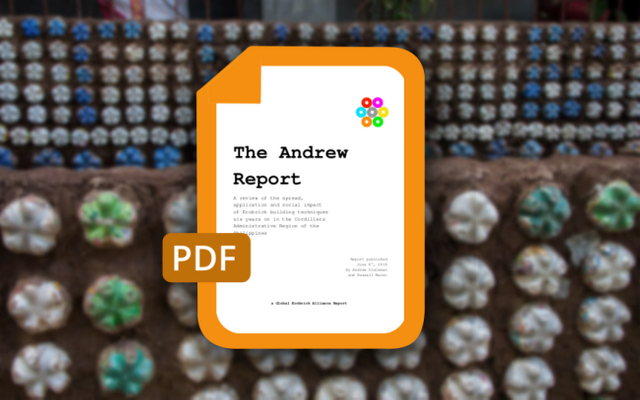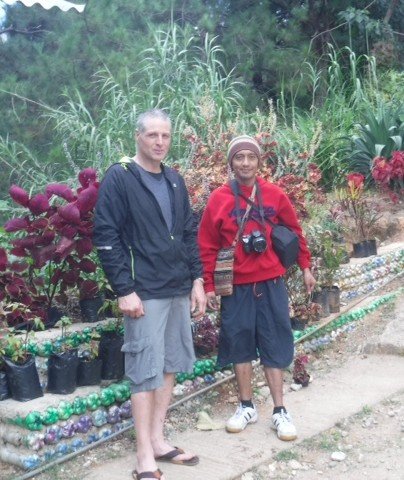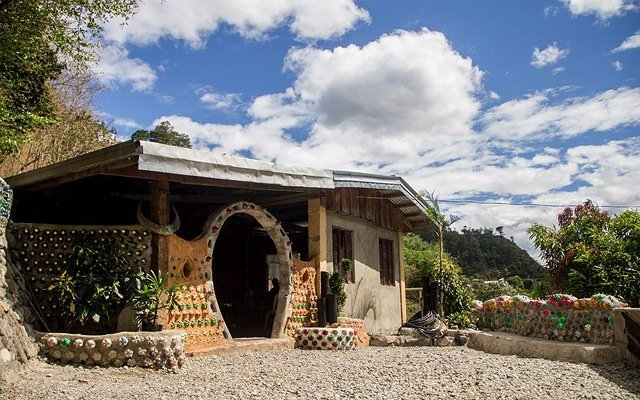
As Ecobricking spreads around the world, its key to learn from the early successes and failures of the movement. In January 2018, Andrew Dieleman surveyed ecobrick constructions and the social impact of the movement six years on in the Northern Philippines. His report presents valuable insights, observations and recommendations for ecobrickers around the world.

Andrew Dieleman, a Canadian engineer and chief surveyer for the report, poses with Denver Puyongan as they inspect the ecobricks of Albago, National Highschool, in the Northern Philippines.
The use of ecobricks as building blocks has only been around for little more than a decade. As ecobricking gains popularity and demand for ecobrick construction rises, there is need for historical and longevity data on their useage. We can learn valuable insights from early constructions, in particular from the Northern Philippines.
In 2009, the Filipino Ecobrick movement ignited in the land of the Igorot people. Fueled by the unique and deeply sustainable cultural paradigm of the Igorots, one of the few unconquered indigenous peoples in Asia, ecobricking spread throughout the Northern Philippines like wild fire. By 2014, the Department of Education estimated that close to 2000 schools in the CAR area and over 250,000 students had learned to ecobrick.
From 2009 onwards, a small team of builders began experimenting with Ecobrick building methods inspired by cob and igorot techniques. With limited internet access in these areas, the building techniques that arose were by and large independent from other bottle building techniques around the world. The variety of applications that arose focused early on, to incorporate ancestral Igorot Ayyew values. These Ayyew applications have gone on to inspire foundational GEA earth and ecobrick building techniques.

In early 2018, Andrew Dieleman, a Canadian mechanical engineer, visited several key Ecobrick locations to survey both the physical durability of constructions and the sociological durability of the movement. With the help of Russell Maier, one of the early pioneers of the Filipino movement, Russell and Andrew compiled what has become known as The Andrew Report.
As the Ecobrick movement continues to spread and as the GEA revises it Earth building methodology for Indonesia, we stand to learn much from the failures and successes the social spread and ecobrick constructions of the Northern Philippines
![]()
Download your copy here:
The Andrew Report
A Review of Cordilleran Ecobrick Constructions 6 years on
PDF (10.4MB)
Posted from my blog with SteemPress : http://www.ecobricks.org/the-andrew-report-ecobricking-constructions-six-years-on/